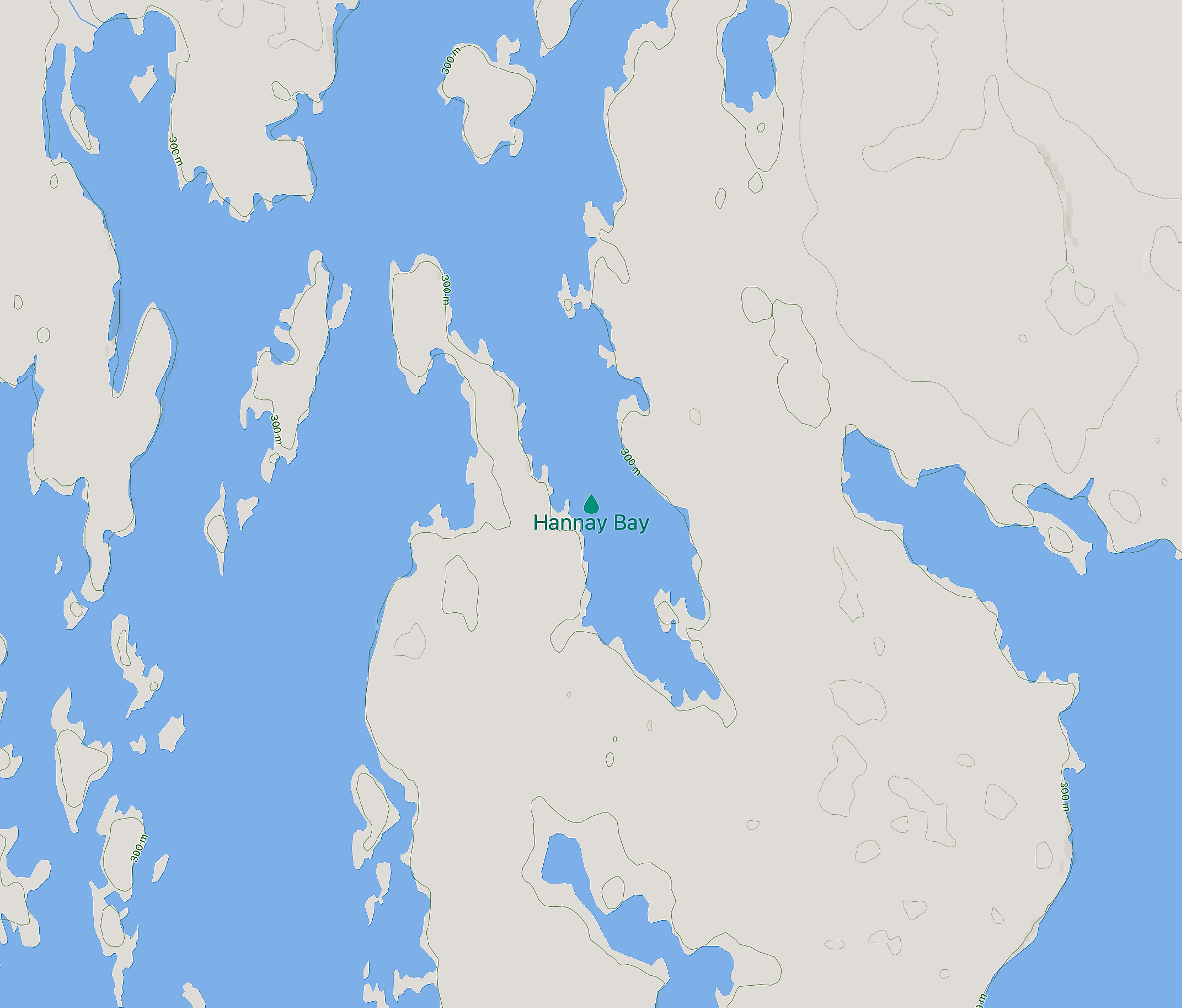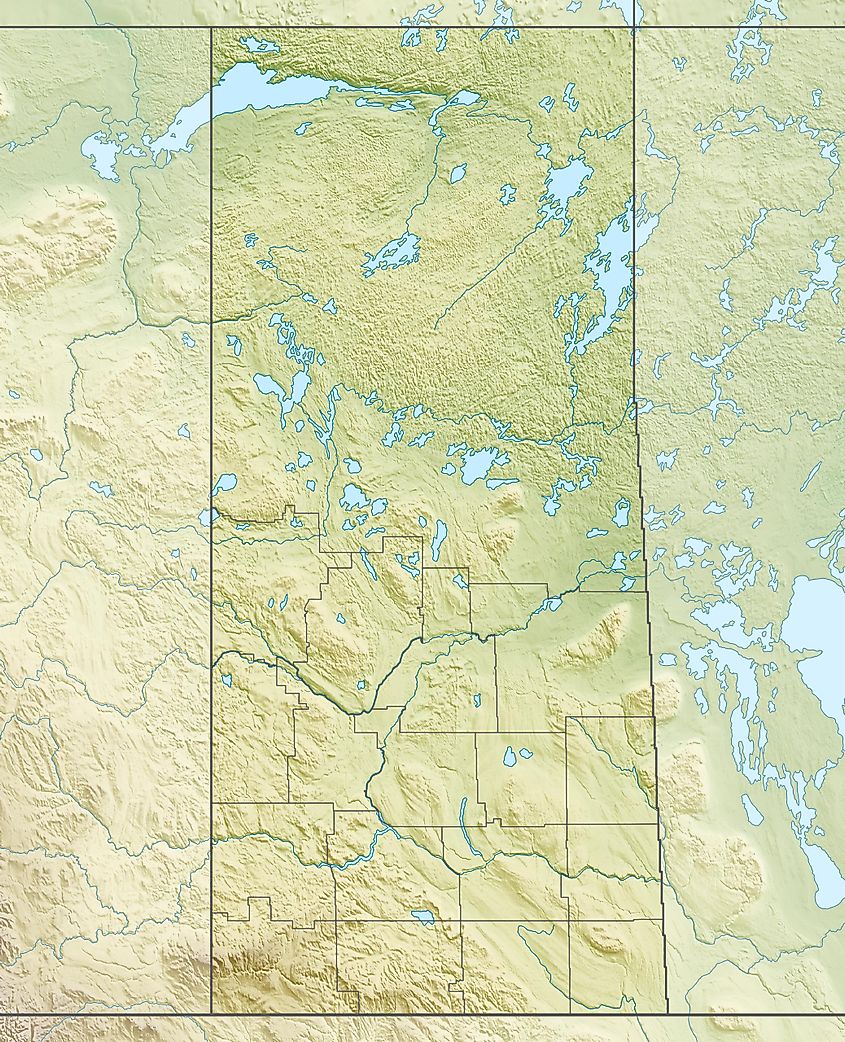
Hannay Bay
A bay is defined as a portion of a coastline associated with any body of water that curves inward, enabling water to extend farther inland than the rest of the water body. A bay is larger than an inlet, which is closer to land, yet smaller than a gulf and more enclosed by land. The bay's mouth is the point where it connects with its larger associated body of water. Geologically, the formation of large bays is often the result of tectonic plate movements. In contrast, smaller bays frequently emerge from millennia of water erosion, especially when the underlying bedrock is naturally porous.
Location

Located on the northwestern side of Amisk Lake, in the Canadian province of Saskatchewan, Hannay Bay is a large freshwater bay found near the province’s eastern border with Manitoba. The bay sits at an elevation of 961 feet above sea level and latitudinally sits 54 degrees north of our planet's equatorial plane. Hannay Bay, along with the entirety of Amisk Lake, is part of the Sturgeon-Weir River system, which feeds the lake from the northeast and is fed by the lake in the south. It is part of the Amisk-Welsh Lakes area in Saskatchewan, which prehistorically was a volcanic region. As such, Hannay Bay and the entire Amisk Lake region are geologically comprised of subaqueous mafic flow rock.
History
Hannay Bay was used by the local Indigenous peoples, particularly the Cree Nation, now known as the Peter Ballantyne Cree Nation, for fishing throughout the year. In the summer months, nets and spears were used to hunt the native fish species of Hannay Bay, including walleye, northern pike, perch, burbot, and sturgeon. In the winter, ice chisels were used to dig all the way through the ice so that fishing was possible in the winter months when the lake ices over.
Once colonization began and the fur trade became the formative industry in North America, both the Hudson’s Bay Company and the North West Company began trying to outflank each other as they pushed further and further inland away from Hudson’s Bay. In 1774, an expedition was launched by the North West Company led by Alexander Henry Sr. and the Frobisher Brothers, Joseph and Benjamin. After finding Lake Amisk, they found themselves stuck by winter weather and ended up wintering over during the winter of 1774. In the following years, the Hudson Bay Company and the North West Company competed for territory and access to Lake Amisk, including Hanna Bay. This competition lasted until, in the end, the Hudson’s Bay Company overtook the North West Companies' outposts.
Modern Day
Hannay Bay was named after Albert Edward Hannay, who fought and died in WWII in the Royal Air Force. One of the few islands in the bay is named Hannay Island after Hugh Halbert Hannay, who died of wounds sustained during the same war as his brother.
Today, the nearest permanent settlement to Hannay Bay is Denare Beach, situated east of the Bay, near the Amisk Lake Recreation Site. Hannay Bay has largely been reclaimed by nature since the decline of the fur trade. This has allowed the preservation of the pre-colonial ecosystem, supporting the survival and thriving of certain species that have been diminishing in other parts of Saskatchewan, including some areas of Amisk Lake. However, for some species, the sanctuary of Hannay Bay came too late, as they had already become extinct by the time the fur trade ended.
Flora and Fauna
Sitting on the border of Saskatchewan’s Boreal Shield and Boreal Plain eco-regions, the wildlife in and around Hannay Bay is more of the Boreal Shield variety. The forests which surround the bay, and Lake Amisk, are made up of a wide range of tree species such as Aspen, Poplar, White and Black Spruce, Jack Pine, Balsam Fir, Tamarack, and Birch trees, to a lesser degree. There are also substantial peatlands that drain and deposit nutrients into Amisk Lake.
While today there is little human interaction with the ecosystem of Hannay Bay, the fur trade, which began in the 16th century and ended in the 19th century, had a major impact on the ecosystem around Hannay Bay. From logging, overfishing, hunting, and trapping, the toll taken on the ecosystem was dire, and the land has not had enough time to return to its healthy state. Regrettably, four species in the region surrounding Hannay Bay have gone extinct. These terrestrial animals include the Plains Grizzly Bear, Swift Fox, Black-footed Ferret, and Greater Prairie Chicken. In contrast, the aquatic ecosystem of Hannay Bay and Lake Amisk is home to a diverse range of species. This biodiversity encompasses various freshwater fish, including Walleye, Lake Whitefish, Northern Pike, Burbot, Perch, and a relatively small population of Lake Trout.











